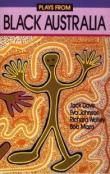The Keepers is set in South Australia during the 19th century. The story centres around the relationship between Mirnat, and Aboriginal Woman and Elisabeth Campbell, the wife of a Scottish missionary. The two women deepen their relationship through their attempts to learn each other's language. The play demonstrates the complexity of the Boandik* sign language which features quite prominently in the play's stage directions and production. (Balme, 1997)
"Documents the experience of Indigenous Australians - in particular, the Boandik of South-eastern South Australia - at the hands of white settlers and their descendants. Spans two generations and two different time frames and stresses the importance of the land: "The Land is alive. It moves. It breathes. We know because we are its keepers.""
*Bungandidj peoples of Mount Gambier region, South-eastern South Australia
Source: AusStage
Source: Balme, C. 1997. 'Reading the Signs: A Semiotic Perspective on Aboriginal Theatre', in Ar̲atjara: Aboriginal Culture and Literature in Australia. Rodopi. p.163.



